Exploring The Lost World of Video Movie Guides
The internet is responsible for devouring whole industries, often with good reason. Why keep an encyclopedia on your shelf when it's outdated and obsolete a month after it's printed, and Wikipedia is not only free but updated literally thousands of times every hour? Who needs video game magazines when sites like IGN and Gamespot deliver up-to-the-second news, previews, reviews, screenshots, plus other things like audio and video that static, non-interactive print platforms can't deliver? Even newspapers, those mainstays of information delivery for centuries, have turned to digital delivery and advertising to monetize and enhance the traditional text-and-picture format of news dispersal.
The other day, I realized the internet successfully murdered another mainstay of my youth, and did it so thoroughly I didn't even realize it had happened. Ask yourself: when was the last time you saw a video movie guide?
They're not completely dead, of course. Gale Cengage cranks out the VideoHound's Golden Movie Retriver bible every single year, and 2018 is no exception. This most recent one is nearly two thousand pages long, and it covers damn near everything you could imagine in every version the film has been released on for home formats, from those cult artifacts available only on VHS to the blockbuster that just hit store shelves on Blu-Ray.
Gale Cengage is doing something right. While VideoHound doesn't exactly top the bestseller lists, it commands a sales rank of around 20,500 on Amazon. Keep in mind that, given the literal millions of books Amazon has for sale on their platform, cracking the top 100,000 is considered a masterful feat; breaking 25,000 is something most books not written by mainstream authors can even dream about. Clearly there are people out there who still enjoy thumbing through this phone-book-sized tome (hey, phone books...something else the internet gutted like a fish!) in search of something to watch. But VideoHound is currently the only publication I'm aware of, at least in the US, doing this. Other mainstays like Leonard Maltin and Roger Ebert have either retired or died, and their guides are no longer published.
The problem, of course, is that IMDB, RottenTomatoes, and other review aggregate sites (not to mention the plethora of amateur and professional film critics who populate YouTube) have rendered books like this obsolete. How long VideoHound continues publication will obviously depend on their fans plunking down the book's $30 cover price year after year. Don't get me wrong, I'm happy to see them still pushing forward, but the death of the video movie guide is a major blow to film buffs, especially those who enjoy niche or cult genres. One book, with one overall editorial tone, isn't sufficient to cater to everyone. With that in mind, let's take a short trip back in time and have a gander at the books you'd see in the library of movie lovers, especially horror enthusiasts, as the 20th century wound down the clock.
Links on each title lead to sales pages for each book, for one-stop shopping convenience in case you find something you really like.
Terror on Tape by James O'Neill
We'll start off with my personal favorite: James O'Neill's Terror on Tape was published in October (of course) of 1994, and in my opinion it has no equal. Writing with the full backing of Billboard magazine's considerable resources, this 400-page paperback is exactly what it says on the cover: a complete guide to over 2,000 horror movies available on video.
When I started truly getting into horror films in the mid-90's, back when you could go to a rental store and still find hundreds of options on the shelf, this book was my bible. It's well put together, with films listed in alphabetical order, so you get Abbott and Costello Meet Dr. Jekyll and Mr. Hyde to Zontar, The Thing From Venus and everything in between. What's especially helpful is O'Neill includes entries for alternate titles some films were released under, and points the reader to the primary entry where they're reviewed. While this information is a simple Google search away on one's cell phone, it was essential for the late-90's connoisseur who encountered a copy of Scream and Die on the shelves, didn't realize it was just The House That Vanished under a different title, but had their copy of Terror on Tape and thus avoided spending money on that steaming pile of rectal release a second time.
O'Neill rates every film between 1/2 and 4 stars, provides a review pointing out the good and bad, the MPAA rating (if there was one), the year it was released, who the current-as-of-publication distributor of the video was, running time, director, and major cast. In addition to the reviews, he also includes hundreds of side-bars which discuss actors, directors, screenwriters, effects artists, and such in more detail. And while every film doesn't merit a picture, there are still plenty of great black-and-white images ranging from quarter-page to full-page scattered throughout.
The only downside? It hasn't been updated since 1994, so you won't find entries for Village of the Damned, The Mangler, Scream, From Dusk Til Dawn, Species, or anything produced since 1995. That said, for someone looking to up their knowledge of pre-90's horror fare, especially with regard to the infamous Video Nasties or Section 3 films from the UK, or the stuff that's been out of print since the 1980's, this one's impossible to beat.
Video Trash & Treasures and Video Trash & Treasures II by L. A. Morse
Hey, look at that--it's a two-for-one! Larry Morse put together this pair of amazing mass-market paperbacks that together offer up over a thousand film reviews in categories ranging from science fiction and horror to exploitation and martial arts. Big budget or no budget, common knowledge or underground sleazefest, Morse covers a wider territory than O'Neill's Terror on Tape, so if your tastes run beyond pure blood and guts, these are great reference manuals to the grindhouse era and a little beyond.
While I like these books, and Morse's reviews are a lot more tongue-in-cheek and sardonic than O'Neill's, their major downside is presentation. There are no pictures, so they're text-only fare. Morse groups films by category, but then within that category he doesn't go in any specific order. He makes up for this with comprehensive indexes in the back of each book, but this turns the books from handy guides into more sit-and-browse fare. If that's what you're looking for Morse has you covered, and if you're wanting cult stuff in martial arts films, period dramas, and renegade cop flicks from the 70's and 80's, you'd be hard-pressed to find a better pair of resources than these.
Maybe the best part of them is a nice extra Morse included in each volume. The top-right corner of each right-hand page contains one hilarious (or hilariously awful) quote from one of the movies Morse reviewed. If you need a good laugh, pop one open to a random page and have a chuckle at some true stinkers that someone got paid actual money to pen. Who can deny classics like, "What I think is wrong with the country today is that there aren't enough people chained up," from The Missionary, "Helluva pair of tits--best I've seen in a long time!" from Supervixens, or, "There's something about blasting the shit out of a razorback that brightens my whole day," from Razorback. Comedy gold right there, and fodder for trivia among your weirder film buff friends.
Creature Features by John Stanley
When Fangoria magazine refers to a guy as "The Leonard Maltin of horror!", you can be assured he's worthy of your attention. Such is the case with John Stanley, who spent two decades compiling, watching, and reviewing the films that appear in this compendium.
This particular paperback was published in 1997, but Stanley was no stranger to film guides dedicated to the bizarre, alien, and horrific. He published The Creature Feature Movie Guide in 1981, updated it in 1988 as Revenge of the Creature Feature Movie Guide, then updated it a second time in 1994 with The Creature Feature Movie Guide Strikes Again. All of them are fine examples and resources, but this 582-page monster is all three previous books condensed down to their purest form for your entertainment and educational purposes.
Also unique to this edition is Stanley's decision to actually rate the movies he reviews. Previous entries in the series had the capsulized reviews, but no actual rating. While it's nothing new--the traditional 1- to 5-star system used by many reviewers--it is nice to see them. Some people, myself included, seek out certifiably-awful films just to see how bad they truly are, so the ability to flip through a book in search of the 1-star dregs of celluloid is much appreciated. The films are also presented in alphabetical order, instead of separated by genre the way Morse divided up his books, which makes locating a particular movie a cinch. Like O'Neill, alternate and international titles are also included, so if you run across a reference elsewhere to Microscopia, you'll find out it was just an early title for Fantastic Voyage and can flip to the appropriate entry.
If the book has a down side, it's that it's a mass-market paperback. If you've ever picked up one of Leonard Maltin's guides, you know that translates to some tiny-ass print--that's not a terrible thing in and of itself, since the smaller font means Stanley's got room to write several paragraphs about a film if he chooses, but if you have trouble focusing on little letters, bring your magnifier. It's also focused strictly on sci-fi, fantasy, and horror; unless that cult movie you're seeking fits those genres, you won't find Stanley opining on it here. Finally, like the Video Trash & Treasures volumes, this is strictly words-on-page only. Sorry, no pics of gory FX or nubile, under-dressed ladies to be found. On the upside, being published in 1997 means it covers more territory than the previously-discussed books, which means you'll find movies like The Craft and Bordello of Blood among its pages.
In case you can't tell, I really miss the movie guidebook era. While it's true you can still get your fix online, and the internet has made it even easier to discover those hidden gems, watch their trailers, or sometimes see them in their entirety for free thanks to streaming services or gratuitous abuse of copyright, there's still something about finding a great book, compiled by one person, offering up their own unique voice after having put in the months or years of research to make themselves an expert in their field.
Before closing, I want to point towards the one guy online who I feel has truly managed to harness this movie guidebook style while adapting it to 21st century sensibilities. YouTuber Glenn Criddle has spent the last decade putting his reviews, commentaries, and critiques online for other film buffs to enjoy. His focus has been strongest on the so-called Video Nasties, those films banned and censored in the UK for being in violation of the Video Recordings Act, and his critical eye is second-to-none whether he turns it on certified classics like Susperia or utter trash like Faces of Death. That he has fewer than 10,000 subscribers after ten years of hard work is a travesty, so if you're a fan of horror in particular, or a cinemaphile in general, you owe it to yourself to at least take a look at his work.
Now, go forth and sin in excess...preferably by watching something truly gnarly, nasty, or bloody disgusting tonight!
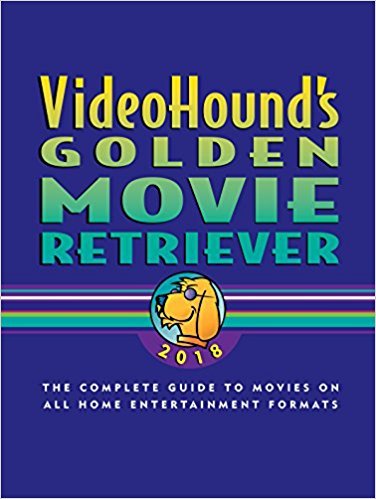
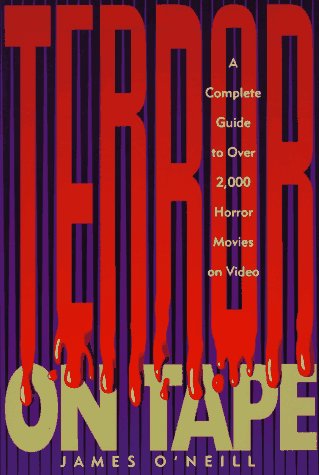
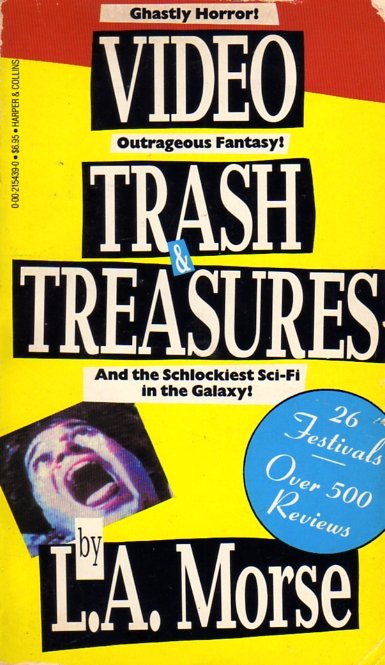
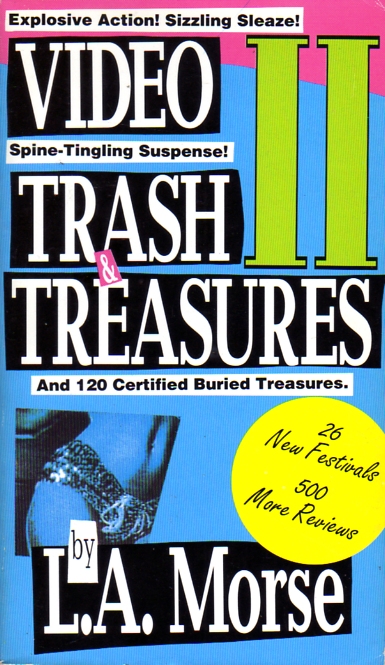
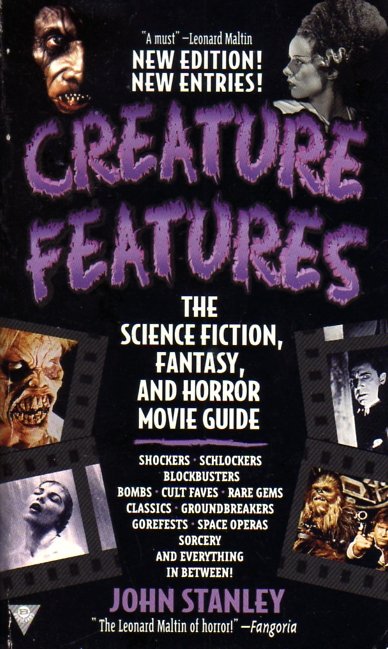
Great post! I remember having a copy of Leonard Maltin's guide that I purchased back in 94, it was so thick in pages that it reminded me of a Guinness book. The internet has eliminated so many things in print, now that books can be read in PDF format.
I still love to read actual books though and I will buy physical books as long as they're being printed. There's nothing more relaxing than holding an actual printed book in your hands, it beats staring at a lit screen over an extended period of time.
The Guinness books are another casualty of the internet age. Once they were these doorstop-sized paperbacks, filled with all manner of weird and awful stunts and pictures, written for an older audience. Nowadays, they're a couple hundred pages, coffee table sized, full color, and written for kids.
I know what you mean about the Maltin guides. My grandparents had one from the late 80's that could entertain me for hours. :)
Very cool post, thanks for sharing.
I am wondering if you can find international films too in these guides (french, spanish etc)?
Thank you, @johnd89!
International films could be found in these guides, but usually only if they had a US release. There were other specialist publications and periodicals ("Asian Trash Cinema", for instance, published at least two film guides that deserve a spot on a follow-up posting) that focused on bringing information on non-American and non-English language films to an English-speaking audience.
Within these specific books, it was most common to see European cinema features get the write-up, with a heavy emphasis on Italian cinema due to films like Cannibal Holocaust and directors like Lucio Fulci who contributed greatly to the genre as a whole. There are mentions of French, German, British, Spanish, Chinese, Japanese, and other international movies scattered throughout, but the bulk of the guides I've seen are very American-focused. Of course, I live in the USA, so I would imagine resources like this from other countries would provide a central focus on films from their locale. :)
OMG You did hit the nail onto the head
Cannibal Holocaust, what a darn classic. Had all the elements.
I believe there are some disturbed screenwriters and directors out there, and I am not sure what is involved in releasing a low budget movie in different countries but I would consider subtitled versions. Like that you don't lose anything;D
Thanks for your reply.
Very interesting! It's incredible how much the Internet has rendered obsolete. And yet, if you look, you can still find them - videogame magazines, sci-fi short story magazines, phone books, and video movie guides - and I was only peripherally aware those even existed, but in retrospect, of course they would. Obviously.
It's interesting to see what's supplanted them though. While we don't see very many video movie guides or music album guides, we do see things like "1,001 Moves You Must See Before You Die", and similar things for music, travel, even video games.
NPR (National Public Radio) published several guides to Classical music and its acquisition for your collection. Other outfits did the same for genres like Jazz and Rock. Good luck finding new editions any longer though. NPR last updated their guide to building a Classical CD collection in 1999, for example. :)
I probably shouldn't love these things as much as I do, but darn it, I am who I am. :)
Congrats! This post was resteemed and upvoted by @puppybot!
Send 0.400 SBD or 0.400 STEEM to @puppybot with your post URL in the memo. Get your post resteemed to 4000+ followers and get a minimum of 20+ upvotes!
Want to learn more? Click here!
This post has received a 11.75 % upvote from @booster thanks to: @modernzorker.
informative post...thank u so much..@modernzorker
@resteem done
Good post
thats good post...
@resteem done